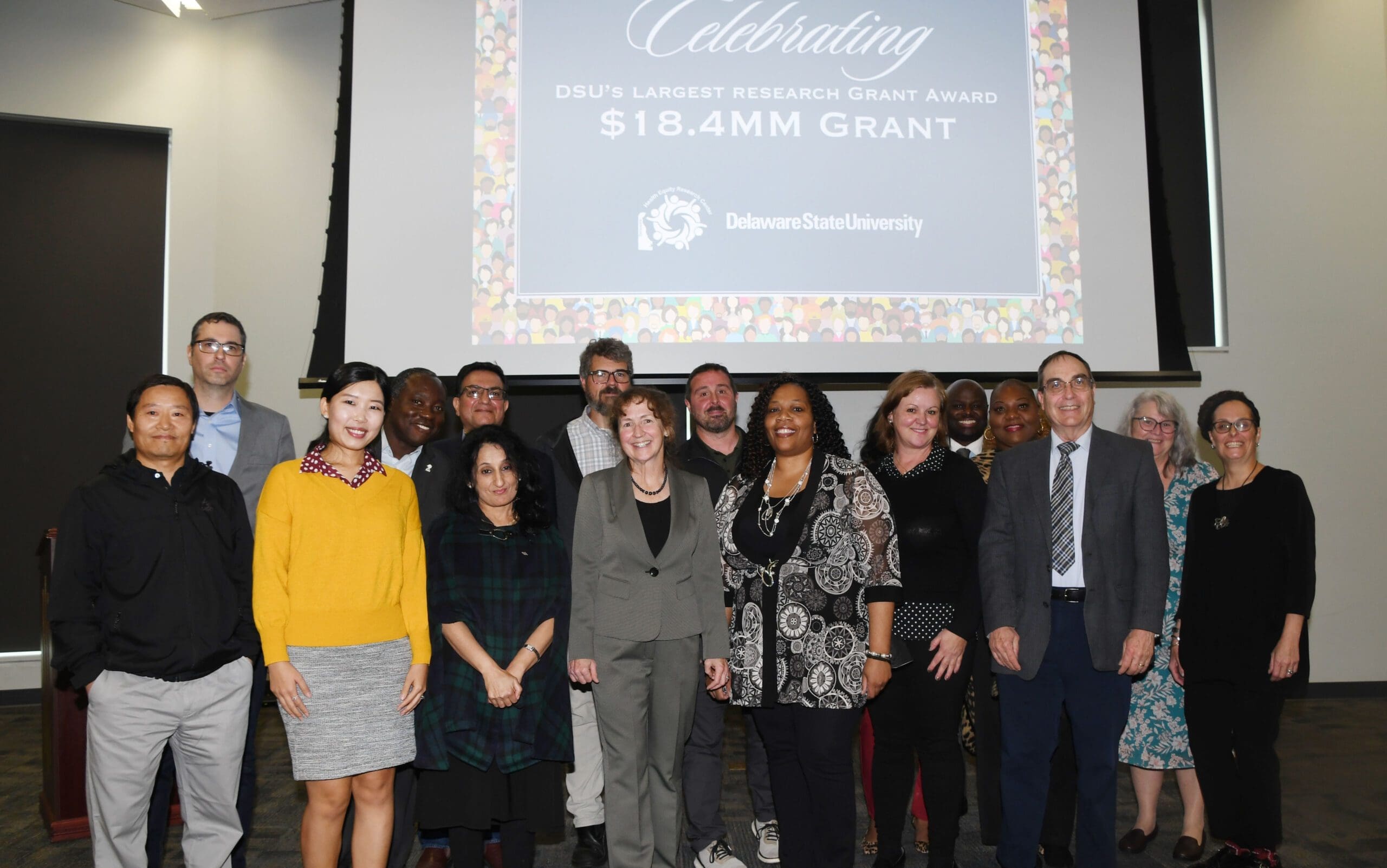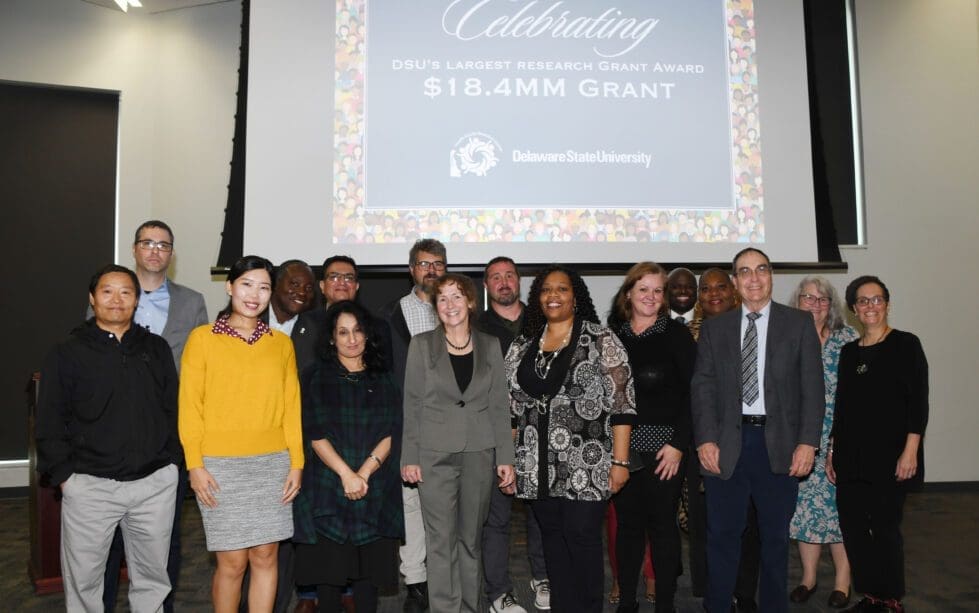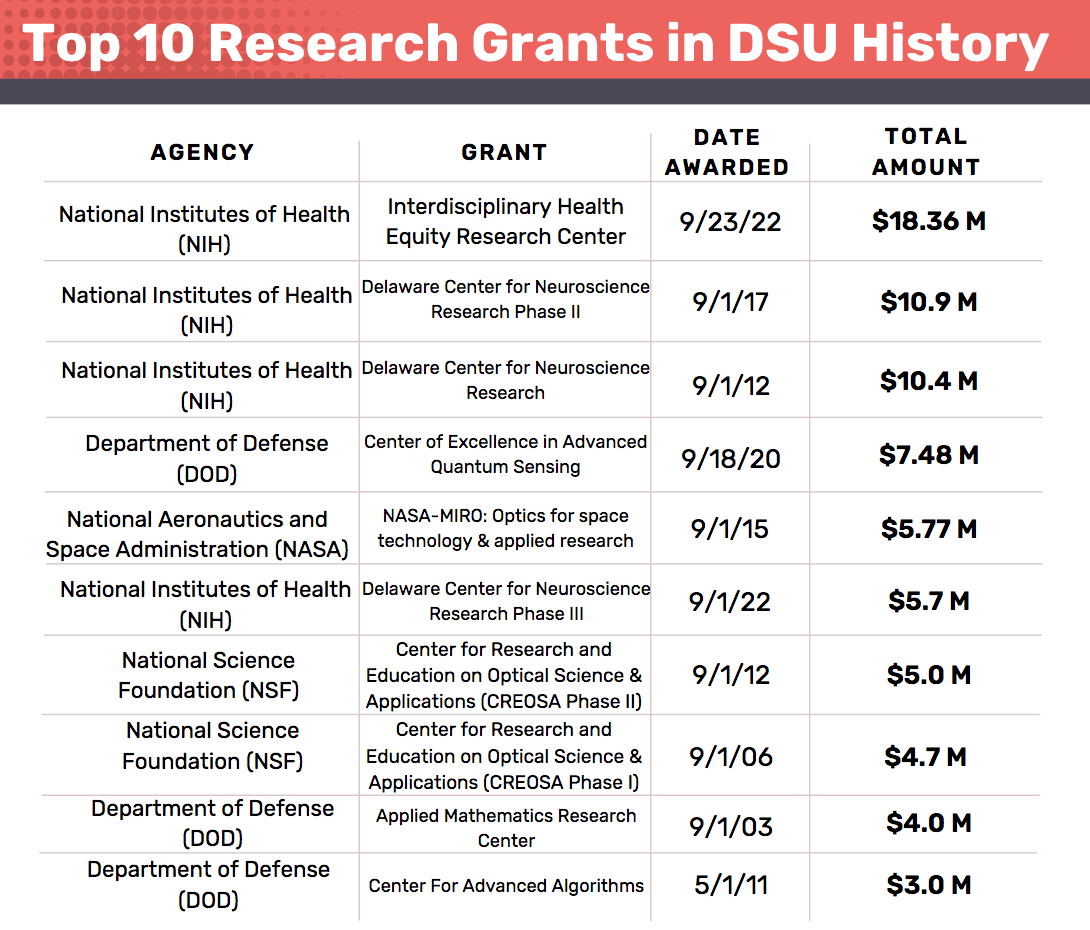
DSU held a ceremony Wednesday to celebrate the largest research grant awarded in its 131-year history.
It was a historic day for the Hornets of Delaware State University Wednesday, as the school announced it has received the largest research grant in DSU history.
The 5-year, $18.36 million research grant from the National Institutes of Health will help establish an Interdisciplinary Health Equity Research Center on campus.
The center will investigate how certain populations, typically underserved communities, are disproportionately affected by negative social and health outcomes.
The $18.36 million grant nearly doubles the next largest grant in school history, which was $10.9 million neurosciences grant, also from the National Institutes of Health.
Sen. Trey Paradee, D-Dover, said during a ceremony celebrating the grant that research on underserved populations is desperately needed.
The mortality rate for Black children is 12 deaths for every 1,000 births, while just 3.1 white children die for every thousand born, he said.
“It’s over four times the rate,” he said. “That’s the sad reality and it’s something that the state has been working on addressing. We have not made the kind of progress that we need to make and that is affecting children of color up and down the state.”
Dr. Melissa Harrington, DSU’s vice president of research and one of the principal investigators of the grant, said Delaware ranks No. 40 in the nation for the high incidence of cancer, high cholesterol and high blood pressure.
She also noted it ranks 43 in obesity, 45 for high-risk HIV behaviors and 49 got drug-related deaths per capita.
DSU has applied for this grant five times. Having finally earned it, Harrington joked that she could actually enjoy her Thanksgiving and not spend all of it typing grant proposals.
Dr. Sangeeta Gupta, the other principal investigator of the grant, noted that there will be no physical building. Instead, the money will support researchers and their work.
If the grant gets renewed in five years, the university could build a physical center, she said.
“It’s an award that holds you accountable, and if we deliver, NIH will renew,” Gupta said. “Right now our focus would be more on the personnel and getting quality research done, especially addressing health disparities since Minority Health and Health Disparities is the branch of NIH that gave us the award.”
RELATED STORY: DSU rises to No. 2 public HBCU in college rankings
DSU played a video of representatives from the Health Disparities branch outlining intended outcomes of the grant.
Dr. Yewande Oladeinde, program officer at the National Institute on Minority Health & Health Disparities, said they include:
- Enhance institutional research capacity to conduct world-class research
- Enable all levels of investigators at DSU to become more successful in obtaining competitive extramural support, especially from the National Institutes of Health
- Foster institutional environments conducive to research development and enhancement for early-stage investigators
- Enhance research skills generally, and specifically for improving minority health and reducing health disparities
- Establish sustainable partnerships with community-based organizations in order to promote research efforts and to disseminate research findings
DSU, recently ranked the second best public Historically Black College in America, will use the money to recruit scientists with expertise in behavioral and social research.
The money also will support researchers by developing or expanding core facilities that provide services in biostatistics, qualitative social and behavioral research methods, microscopy and electrophysiology.
The $18.36 million grant nearly doubles the next largest grant in school history. Here are DSU’s biggest research grants:

Raised in Doylestown, Pennsylvania, Jarek earned a B.A. in journalism and a B.A. in political science from Temple University in 2021. After running CNN’s Michael Smerconish’s YouTube channel, Jarek became a reporter for the Bucks County Herald before joining Delaware LIVE News.
Jarek can be reached by email at [email protected] or by phone at (215) 450-9982. Follow him on Twitter @jarekrutz
Share this Post






